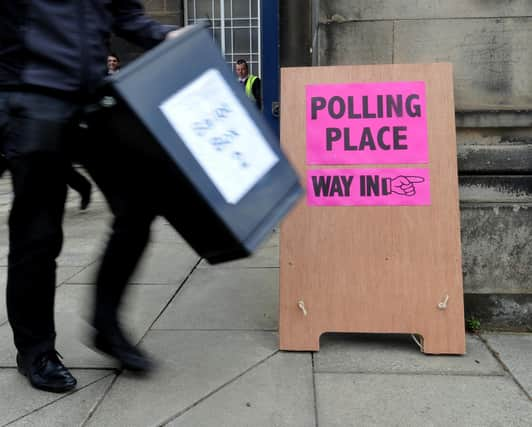Scotland’s voting system needs changed to deliver the working majority required to run a country - Helen Martin


No party was ever expected to have an overall majority. Compared to Westminster, it was designed to avoid powerful management, and instead to be a democratic coalition. It was almost a similar idea as setting up committees for company’s employees or school’s pupils!
So along with the first-past-the-post 73 seats, we had the D’Hondt method involving how the regional Additional Member System of 56 “list” MSPs – those who hadn’t been as successful in constituency wins – acquired their place in parliament.
Advertisement
Hide AdAdvertisement
Hide AdThe first “disaster” for Labour creators and Westminster happened in 2011 when the SNP won 69 of the 73 FPTP constituency seats. That wasn’t supposed to happen – they didn’t expect people to vote in such a way.
But since then, backed by the Greens, the SNP has still run the country.
Unfortunately this time, voters, particularly those longing for independence, have even less of a clear route to decide how to vote in the election.
Alternative independence parties, such as ISP (Independence for Scotland Party) and the Alba Party set up in February, apparently now led by Alex Salmond, are campaigning with their declared tactic to stand for regional lists. One theory is that they could acquire seats previously held by, for example, Tory MSPs, and would therefore be increasing Parliament’s push for Independence.
Advertisement
Hide AdAdvertisement
Hide AdFor some SNP voters (though I cannot calculate or even guess the percentage) their plan is to give their constituency vote to SNP and the list vote to ISP or Alba.
That makes some sense as the more FPTP seats the SNP gains, the fewer list seats it gets because of the D’Hondt procedure promoting other parties.
But the SNP, and most loyal members, are strongly pushing for people to vote SNP1 and SNP2. At this late stage, so close to the election, is it possible that other recently launched parties are less likely to win a list seat and possibly give higher chances for Tories, Labour and LibDems?
Or is it that the SNP don’t want other independence parties challenging and harassing their strategies? Obviously, Alex Salmond and Nicola Sturgeon are in an extremely difficult situation to work together.
Advertisement
Hide AdAdvertisement
Hide AdThe UK’s FPTP election format is certainly not democratic and Westminster’s leading Tories have a 100 per cent, immoral dictatorship role. Our system has some preferable advantage to have a little more democracy and potential for some parties to work together and debate, but the D’Hondt aspect is designed to avoid any clear majority. That might work well for a UK region but not for a country, especially with a potential public majority aiming for independence and desperate to leave the UK and govern itself.
Somehow, we need an explanation, understandable advice on how to list vote and why that will work with this non-national, Labour-created system.
And if independence really is achieved, it would be good to create a new election procedure, which still has a fair element of proportional representation, but is more able to create an operational majority to run the country.
Comment Guidelines
National World encourages reader discussion on our stories. User feedback, insights and back-and-forth exchanges add a rich layer of context to reporting. Please review our Community Guidelines before commenting.